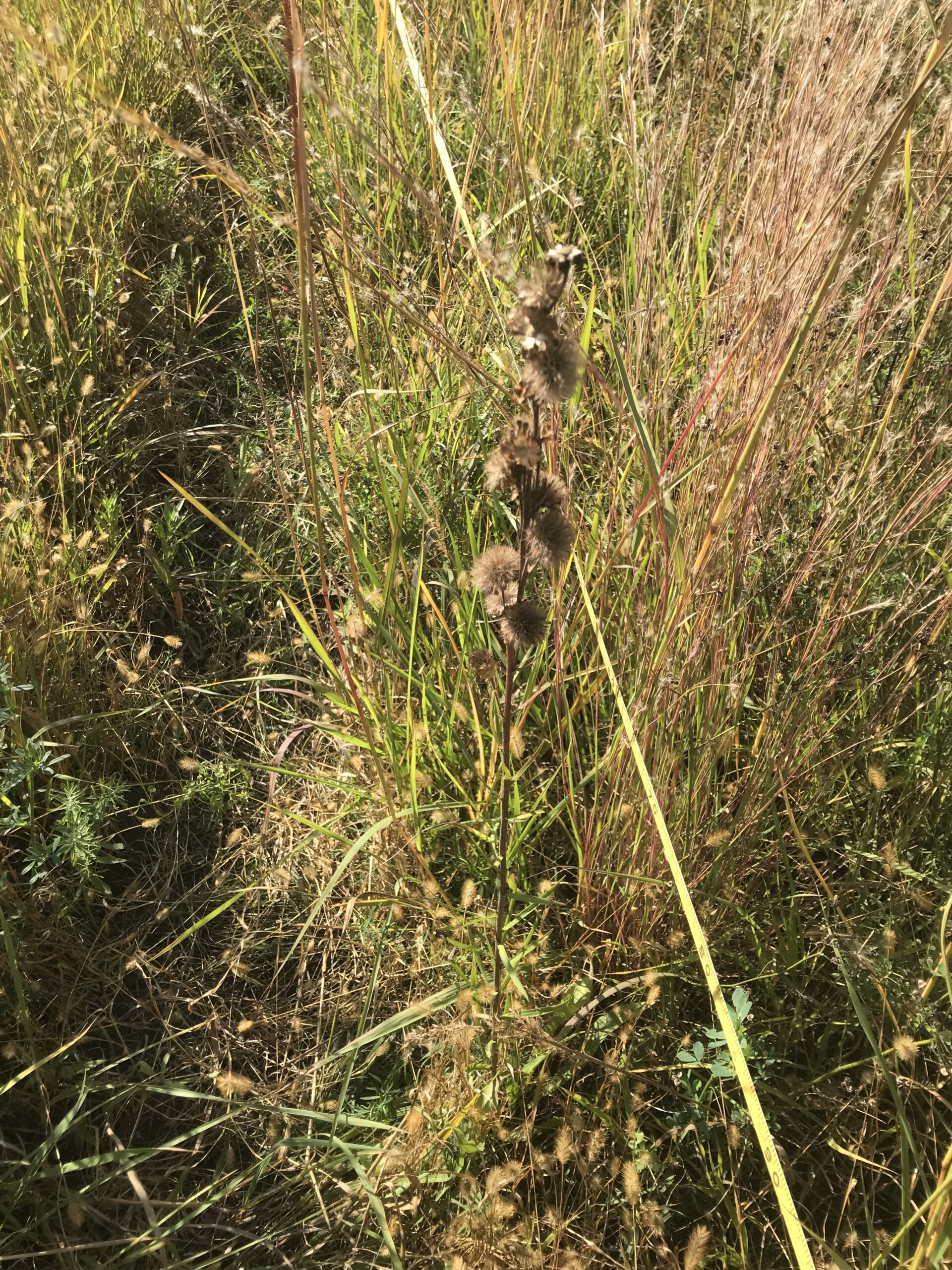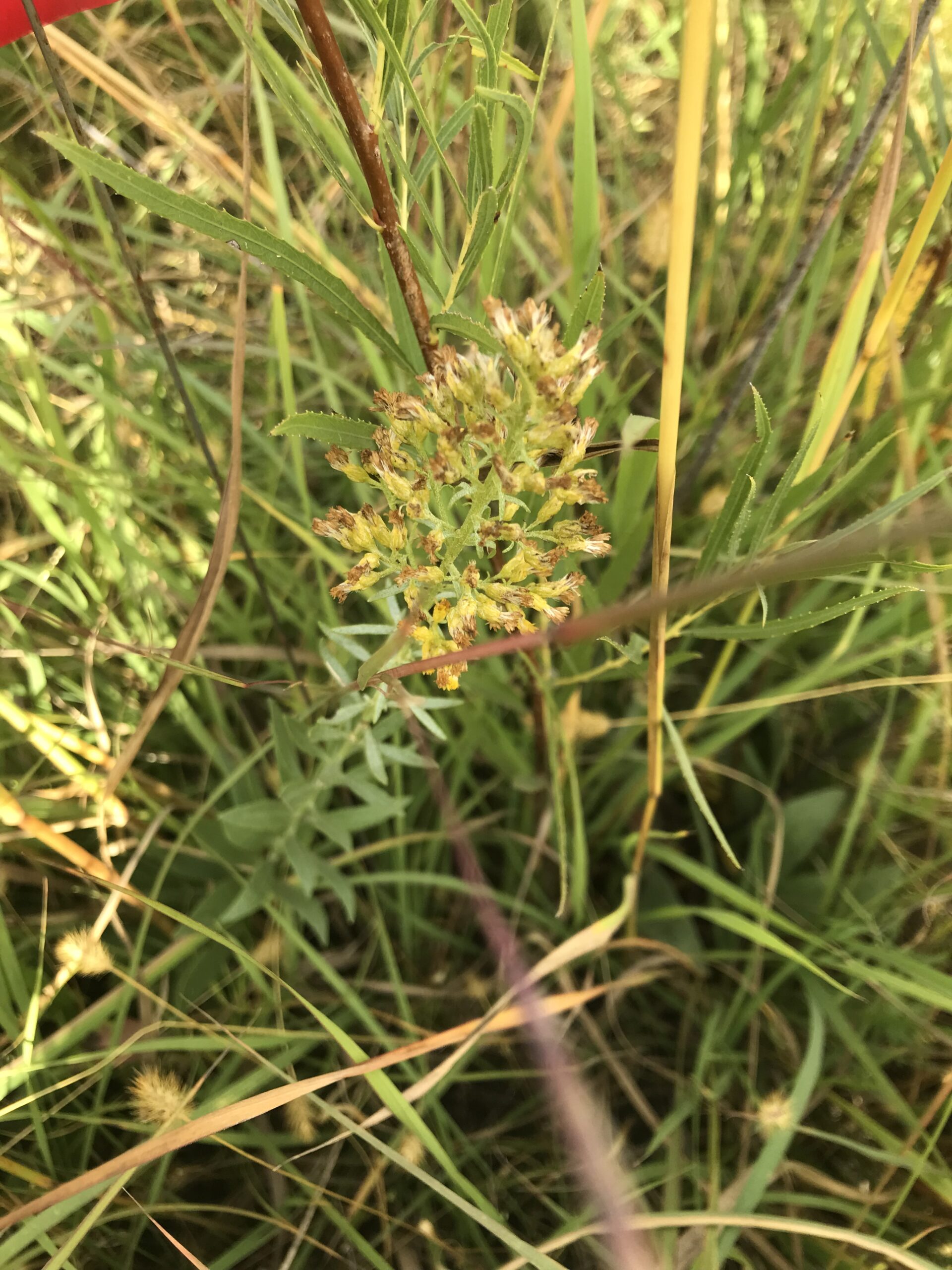Land managers seek to introduce hemiparasitic plants (plants that steal nutrients from other neighboring plant species but still produce some of their own sugars through their own photosynthesis pathways) to restorations because hemiparasitic plants are associated with higher quality prairie. However, whether or not hemiparasitic plants are the cause of the prairie being high quality or the product of the prairie being high quality is unclear. Therefore, in 2020 we experimentally introduced 72 Pedicularis canadensis and Comandra umbellata into the restoration plot, experimental plot 1.
In 2023, we replanted 40 Pedicularis canadensis that haven’t been seen since they were initially planted in experimental plot 1. Additionally, we took our annual measurements of Liatris ligulistylis and Solidago speciosa size and reproductive effort, as well as counts of seedlings present. This year was the first year since 2019 that we did not harvest aboveground biomass around our 216 total planting locations in experimental plot 1.


- Start year: 2019
- Location: experimental plot 1
- Overlaps with: pedicularis effects on host plants in p10
- Data collected: size, reproductive effort, and seedling count in Liatris ligulistylis and Solidago speciosa
- Samples or specimens collected: NA! This year we did not collect biomass
- Products: This work is part of Drake’s Ph.D research. He will be wrapping up this year, so stay tuned!
